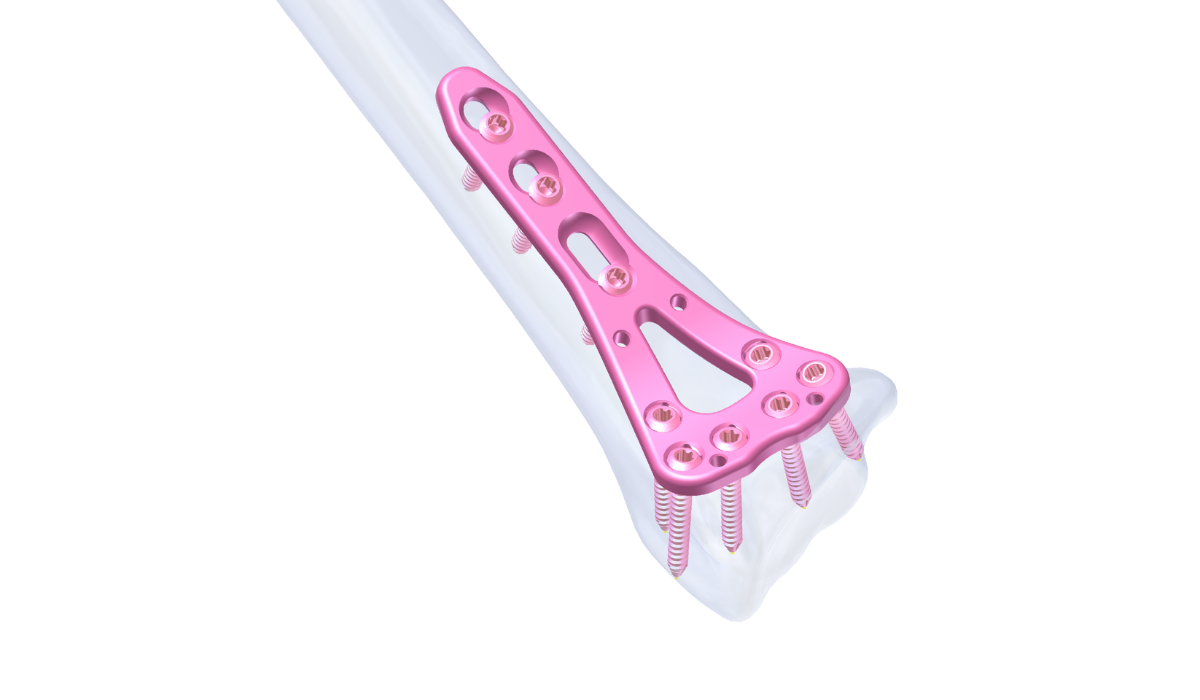
When dealing with osteoporotic fractures, achieving stable internal fixation remains a challenge. Reduced bone density limits the effectiveness of traditional screw-plate constructs, increasing the risk of fixation failure. In such cases, locking plates—particularly modern LCP plates and anatomically contoured pelvic plates—have become the preferred solution among orthopedic surgeons. In this blog, we explore the qualities of LCP plates that make them ideal for managing osteoporotic fractures.
Why Locking Plates Are Ideal for Weak Bone Structures
Locking plate orthopedic implants provide fixed-angle stability, which is critical when working with compromised cortical and cancellous bone. Unlike conventional plates, which depend on friction between the plate and bone, locking plates form a stable construct by securing screws directly into the plate. This reduces the need for bone quality-dependent purchase, making them highly effective in osteoporotic cases where standard fixation methods often fall short.
Key Features of Modern LCP Plates in Osteoporotic Cases
Modern LCP plates are designed to address the biomechanical limitations often encountered in osteoporotic bone. By combining locking screw technology with axial compression functionality, they enable surgeons to achieve enhanced stability even in compromised bone structures. The fixed-angle construct reduces reliance on bone quality, making these plates ideal for patients with reduced mineral density.
These orthopedic implants feature low-profile designs, anatomical contours, and screw hole patterns that support both locking and non-locking screws. Variable-angle screw options allow for targeted fixation, which is particularly useful in complex fractures or in regions with limited bone stock. In pelvic fractures, anatomically pre-shaped pelvic plates further aid in achieving stable fixation with minimal soft tissue disruption.
These features support better intraoperative control, promote early mobilization, and are adaptable across a variety of osteoporotic fracture patterns—including the pelvis, proximal humerus, distal radius, and proximal femur—where compromised bone quality often complicates fixation.
Clinical Outcomes: How Locking Plates Improve Fixation Success
Numerous clinical studies and case experiences support the role of locking plates in improving outcomes for osteoporotic fracture management. Their ability to create a stable construct, even in low-density bone, reduces micromotion at the fracture site and minimizes the risk of hardware loosening or pull-out. Compared to conventional plating systems, locking plates have shown improved maintenance of alignment and reduced rates of mechanical failure. In anatomically challenging areas, locking plate constructs enable secure fixation while reducing the need for extensive periosteal stripping, which is crucial in elderly patients. By distributing mechanical forces across the plate-screw interface rather than concentrating them solely in the bone, locking plates contribute to more predictable healing in osteoporotic cases. They also support earlier rehabilitation and improved long-term functional outcomes in patients with fragile bones.
Choose the Right Orthopedic Implant Partner
Effective osteoporotic fracture care depends not only on implant selection but also on trusted partnerships. Madison Ortho offers a comprehensive portfolio of orthopedic implants, including LCP and pelvic plates, designed for optimal fixation in compromised bone. Our implants are manufactured to support surgical accuracy, intraoperative flexibility, and post-operative stability across a range of osteoporotic presentations. Explore our full range of orthopedic implants—including locking plates, LCP plates, and pelvic fixation systems. To discuss your requirements and get answers to your questions, call all +1-787-945-5800 or email info@madisonorthoinc.com.
